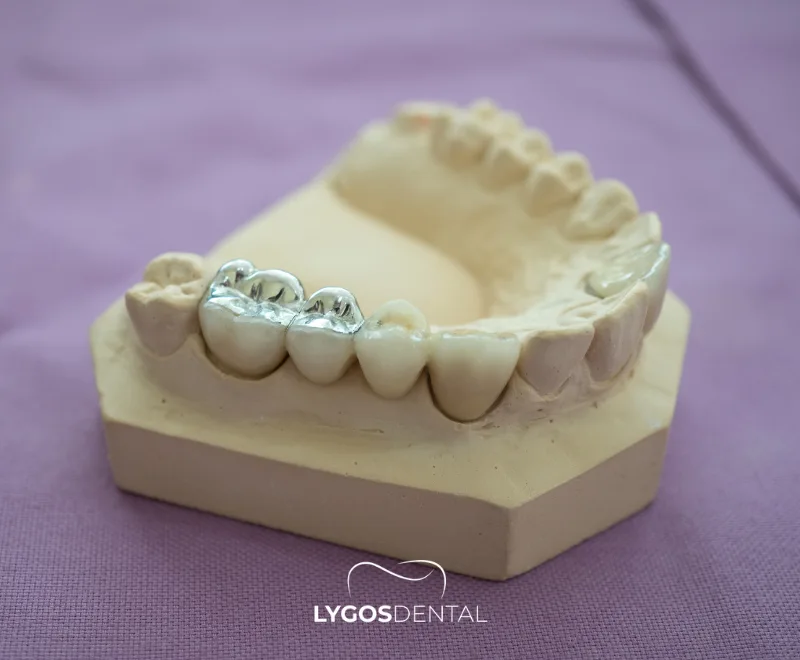
Dental health has a significant impact on our overall well-being. If tooth decay is not treated on time, it can lead to pain and more significant health problems. One of the most common ways to treat cavities is through dental fillings. While there are many types of fillings available, what is amalgam filling? Amalgam fillings have been used for many years and are generally known for their durability. So, what is amalgam filling? When is it preferred, and what are its advantages and disadvantages? In this article, you will find detailed information about the composition of amalgam fillings, their uses, and how they differ from other types of fillings.

Dental health directly affects overall health, so regular dental care is crucial. If tooth decay is not treated in time, it can lead to more significant issues. One of the most common ways to treat dental decay is through fillings. With many types of fillings available, it’s important to understand what is amalgam filling.
An amalgam filling is a type of dental filling material made from a metal alloy. It is typically silver in color and used to fill cavities in decayed teeth. It is especially preferred for back teeth and areas that need to withstand chewing forces due to their durability. After cleaning the decayed tooth, dentists use amalgam to fill the cavities. In this context, what is amalgam filling and what role does it play in dental treatment?
Amalgam fillings are made up of several different metals. What is amalgam filling composed of? These metals primarily include silver, mercury, tin, and copper. What is amalgam filling in terms of its metal composition? Mercury is a key component, as it keeps the amalgam in a liquid form, allowing the dentist to place the filling accurately.
After being applied, the filling hardens and becomes durable. The ratio of metals used in amalgam fillings can vary. What is amalgam filling’s composition? Silver makes up the majority of the filling, usually around 40-60%, while mercury makes up 25-30% and facilitates shaping the filling. Tin and copper are present in smaller amounts, enhancing the strength and longevity of the filling. What is amalgam filling and how do its components explain its effectiveness in dental treatments?

What is amalgam filling compared to other fillings? Amalgam fillings have some distinct differences compared to other types of dental fillings. Amalgam filling’s difference in terms of aesthetics, durability, price, and application time? Understanding these differences helps explain what is amalgam filling.
Amalgam fillings have several advantages but also some disadvantages. What is amalgam filling’s pros and cons?

What is amalgam filling’s post-care importance? Proper care after getting an amalgam filling is essential to prolong its lifespan and maintain good oral health. What is amalgam filling’s care routine? After getting an amalgam filling, it is crucial to follow specific post-care instructions to ensure its longevity and prevent potential complications.
During the first 24 hours, patients should avoid consuming very hot or cold foods and refrain from chewing hard foods on the treated side to allow the filling to settle properly. Brushing and flossing should be done gently around the filled area to avoid dislodging the filling or irritating the gums. Regular dental check-ups are recommended to monitor the condition of the filling and detect any issues early. Additionally, patients should be mindful of excessive pressure on the filling, as long-term stress from habits like grinding teeth can wear it down over time. By adhering to these care recommendations, patients can maximize the lifespan of their amalgam fillings and maintain optimal oral health.
You can contact us here to learn more about Cosmetic Dentistry, Dental Crown, Dental Implant and General Dentistry to make an appointment and to get information about our services.
What is amalgam filling’s cost factor? The cost of amalgam fillings is generally more affordable compared to other types of fillings. However, what is amalgam filling’s price variation based on material use, tooth location, and complexity of the procedure? What is amalgam filling’s price range? Typically, the price of amalgam fillings ranges from 1000 TL to 1500 TL.
In conclusion, Amalgam fillings are a well-established and durable option for dental fillings. What is amalgam filling’s aesthetic disadvantage? While they may have aesthetic disadvantages, they are an excellent choice for treating cavities in the back teeth. What is amalgam filling’s economic advantage? They are widely preferred due to their economic value and long-lasting nature. However, amalgam filling is importance in consulting a dentist before deciding on the best treatment option?
Amalgam fillings are a type of dental filling made from a metal alloy, primarily consisting of silver, mercury, tin, and copper. They are durable, long-lasting, and typically used to fill cavities in the back teeth where they can withstand chewing forces.
Yes, amalgam fillings are considered safe by major dental and health organizations, including the American Dental Association (ADA). While they contain mercury, the amount used in dental fillings is considered to be minimal and not harmful to health.
Amalgam fillings can last between 10-15 years, depending on factors such as the size of the filling, the location in the mouth, and the patient's oral hygiene habits.
While technically possible, amalgam fillings are not usually recommended for front teeth due to their silver color. For aesthetic reasons, tooth-colored fillings, such as composite or ceramic, are generally preferred for front teeth.

Special Note:
Our treatments are provided by healthcare facilities that possess a health tourism authorization certificate

Special Note: Our treatments are provided by healthcare facilities that possess a health tourism authorization certificate
Selenium Retro, Ataköy 7-8-9-10. Kısım, D-100 Güney Yanyolu No:18/A, 34158 Bakırköy/İstanbul
© 2025, LYGOS DENTAL. All Rights Reserved.